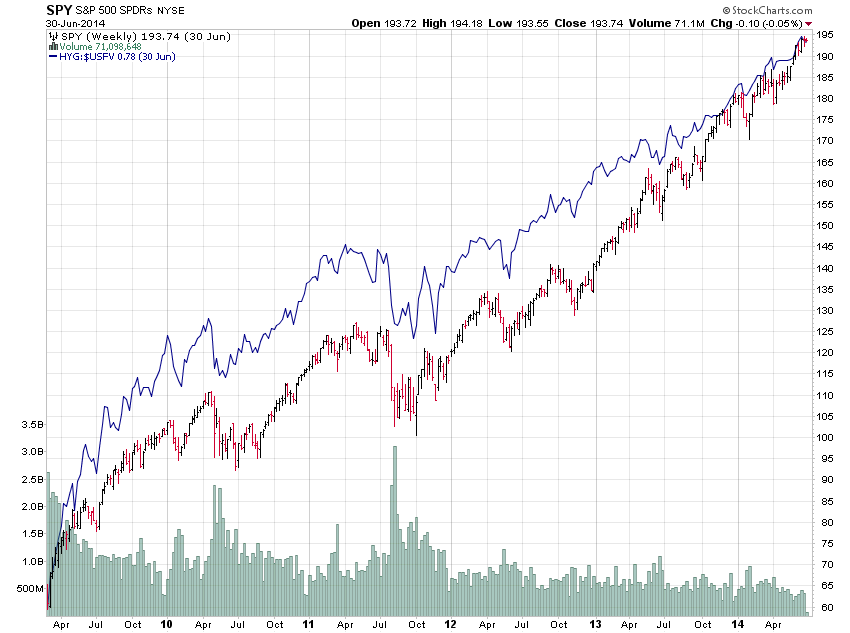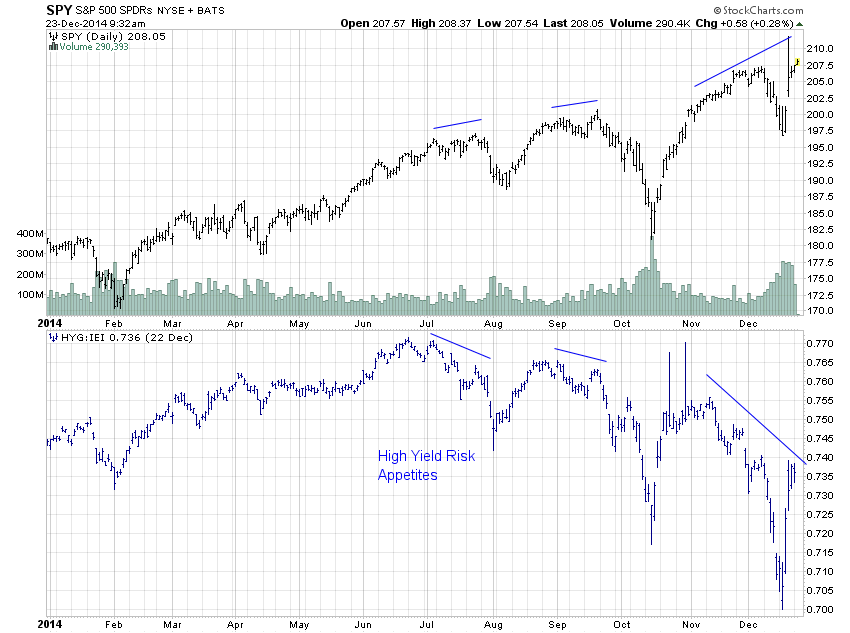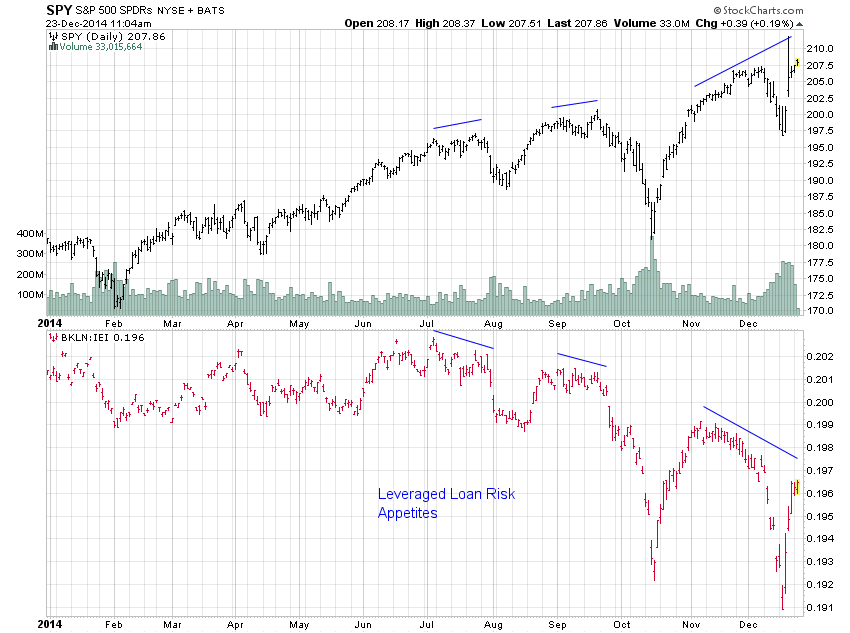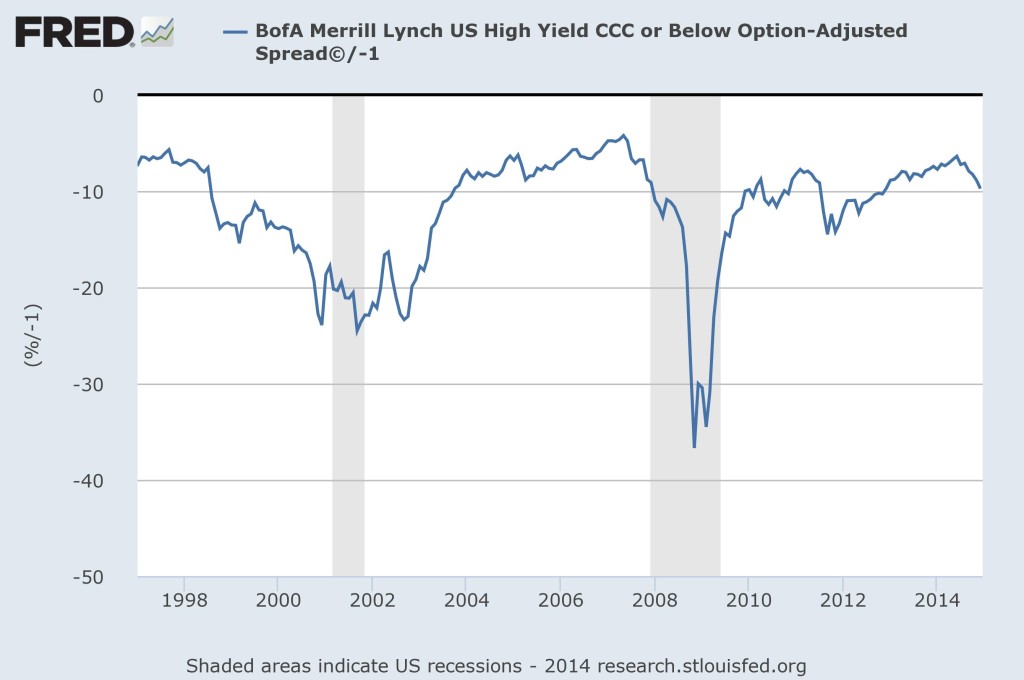James Osborne of Bason Asset Management recently published an excellent critique of the investment concept of “Intrinsic Value.” I urge readers to take a minute and go
check it out. In this piece, I’m going to try to tackle a question that James poses.
That question: what is intrinsic value, and who decides it?
No Selling Allowed
Here’s my answer. The “intrinsic value” of a security is the maximum price that an investor would be willing to pay to own the security if she could not ever sell it.
Three points:
(1) All I am doing here is defining the term. You can define the term in another way if you wish, but then you will be talking about something else. When I use the term “Intrinsic Value”, I am talking about the maximum price that an investor would be willing to pay to own a security if she had to hold it until “maturity”, i.e., for the entirety of its natural life as a security, which, for an equity security, means forever.
(2) According to the definition, the “intrinsic value” of a security is different for different individuals. That’s to be expected. Value, like beauty, is a judgement made by the individual–it exists only in the mind of the individual, the eye of the beholder.
(3) The definition fits with the literal meaning of the word intrinsic–”inherent, innate, inborn, inside the thing itself.” The value that an asset has, inside itself, cannot be a function of the quantity of other useful things that other people happen to be willing to exchange it for in a market. Rather, the value must remain present even when no trading is allowed.
Intrinsic Value: A Thought Experiment
So let me now ask you a question. Suppose that I have a security to sell you. The security works as follows. It pays out $10 in dividends per year. The dividends grow at a real (inflation-adjusted) rate that ranges anywhere from 3% to 5% per year. Of course, over the short-term, the dividends can grow at different rates–sometimes they can even grow at negative rates, i.e, fall. But, crucially, over the very long-term, they always recover. They always regain their 3% to 5% long-term growth trendline.
Now, to avoid uncertainty, let’s assume that the aforementioned features of the security are guaranteed by the full faith and credit of the U.S. government. So there is essentially zero risk that the security will not behave in the way that I just described. The question: what is the maximum price that you would be willing to pay, in cash, to own the security, if you could not ever sell it? Alternatively, what, for you, is the “intrinsic value” of the security?
Take a moment and consider the question as if the proposition were really there for you to take. What is the maximum price that you would be willing to pay? I’m not going to mention any number as a starting offer, because I don’t want to influence your answer.
I’ve posed this question to a number of individuals, both inside and outside the financial industry. Almost everyone answers with a price that is less than $250. Note that at a price of $250, the security would offer a 4% yield, fully protected from inflation, with 3% to 5% real per annum growth added on top. Not bad. That valuation is seen as minimally necessary to compensate the investor for the cost of forever parting with his principal.
The S&P 500: A Growing Stream of Dividends
If you’re particularly clever, you’ve probably noticed that the security that I’ve described here is basically the S&P 500 stock index divided by four. The S&P 500 presently pays an annual dividend of around $40 per year. Not all of the earnings of the companies in the S&P 500 are paid out to shareholders as dividends–some are spent (read: “used up”) on capital expenditures and asset acquisitions. That is precisely why the dividends are able to grow over time at a rate that exceeds the rate of inflation, i.e., the rate at which the prices of all things in the economy, including the prices of the goods and services that corporations sell, changes.
The reason that I divided the S&P 500′s dividend by four is to prevent the current price, 2070, from creating a false anchor in the mind that influences the “intrinsic value” intuitively ascribed to it. So take your earlier price, the maximum price that you would pay for the $10 per year security, and multiply that price by four. That’s your final price, the intrinsic value that you ascribe to the S&P 500. I ascribe around 800. You might ascribe 1000. Or maybe 600. Certainly not the present price of 2070–unless you’re crazy.
If you doubt the logic here, ask yourself: what is the S&P 500, intrinsically, apart from all of this baseball-card-trading that we engage in when we play in markets? That’s the question that you will have to confront if you decide to make a genuine, non-redeemable investment in the security, that is, buy the security without having the ability to sell it. The answer: to you, it is just a growing stream of dividends, nothing more.
Now, how reliable is the assumption that the dividends will grow over the long-term at a rate that exceeds the rate of inflation? Pretty reliable. The historical reliability of the assumption is demonstrated in many centuries of actual data, not only in the US, but in other capitalist economies. That reliability is supported by the inherent diversification of the index–we’re talking about many different companies from many different industries, rather than a single company that might one day go bust. But even if we view the dividend stream as not growing reliably over the long-term, or posit a larger uncertainty around the growth than the previous 3% to 5% range allowed, that will only pull the “intrinsic value” lower–and the lowness relative to the current market price is precisely what I’m trying to emphasize.

As you can see in the chart, the historical real rate of growth of per-share dividends for the S&P 500 has been significantly less than the stipulated 3% to 5%. It’s actually been closer to 1.4%. But there’s an important factor at work. Most of the S&P’s history was dominated by periods in which only a small portion of earnings were consumed on the purchase of future growth. Most of the earnings were delivered directly to shareholders in the form of dividends. Corporate managers have since evolved a preference for earnings reinvestment, and so the current dividend stream tends to grow faster, though it is smaller than it could be, or would have been in the past.
Now, to create a full analogy with the “intrinsic” (i.e., can’t-sell) S&P 500, let’s add a final caveat to the security. You, as the owner, get to determine the payout ratio. We can think of the payout ratio as a dial that you can adjust, any time, at will. You can opt for less dividends now, and more dividend growth, or for less dividend growth, and more dividends now. If you want, you can even choose to have all of the annual earnings that back the security–in the case of the S&P 500, around $110–paid out to you in dividends. The cost of doing this, of course, is that the earnings and dividends will stop growing. They will grow at a real rate of 0%.
You might think that the S&P’s current price of 2070 is a reasonable price for a growthless security that pays out $110 a year. But check that thought. Suppose you had $100,000 in cash sitting around, earning nothing. Suppose further that there is nothing else on earth that you can invest it in but the “intrinsic” (i.e., can’t-sell) S&P 500, priced at 2070. Would you really be willing to part with all of that money, permanently, in exchange for a perpetual payment of only 5.3%, $5,300 per year? Not very many people would be. Some people wouldn’t even be willing to accept 10%, $10,000 per year, or even 20%, $20,000 per year.
Even if never used, the simple ability to get your money out of the security and back into your pocket is worth a ton. That ability represents the difference between your being willing to pay 2070 for the security, on the trust and confidence that you will only be one mouse click–one sell order–away from getting your money back, and being willing to pay only 600, on the stipulation that you will be stuck holding the security until maturity, i.e., for the rest of its life, which means the rest of your life.
Now, to be clear, I’m not saying that it’s irrational for you to be willing to pay 2070 for the security. I’m saying that, built into your willingness to own it at that price, is a (largely justified, at least for now) expectation that you will be able to sell it, on demand, to someone else at a price near that price–hopefully, at a price higher. That expectation makes the security dramatically more attractive to own than it would be if it were just what it is intrinsically–a simple stream of growing dividends that had to be held as such.
The Dividend Discount Model
In 1956, Myron Gordon and Eli Shapiro developed the
dividend discount model of equity valuation. On this model, the intrinsic value of an equity security is the sum total of all of the security’s future payouts, from time now until time infinity, discounted back to the present. Gordon and Shapiro showed mathematically that when discounted at a required rate of return
r, an infinite stream of dividends with a starting annual dividend level of
d and an annual growth rate
g is worth a present price
p, roughly equal to,
(1) p = d / (r – g)
Rearranging to solve for r, we get,
(2) r = d / p + g
which neatly says that the rate of return that an equity security produces for its owner equals the dividend yield (d / p) plus the dividend growth (g). Note that if we want, we can make the dividend yield equal the earnings (e) yield, but then g will go to zero, so we will end up with,
(3) r = e / p
which simply states that the rate of return that an equity security produces for an investor equals the earnings yield, provided that all of the earnings are paid out in present dividends.
Now, the dividend discount model is just a way of formalizing the intrinsic valuation process. The ambiguity and subjectivity in that process remains–the model simply places the ambiguity and subjectivity inside the convenient term r, the discount rate, which is the rate of return that investors demand in order to exchange cash now for cash later. You can make the intrinsic value of a security be anything you want, any number from 0 to infinity, depending on the discount rate that you choose to impose. And why must you choose to impose any one discount rate over any other? As an investor, it’s your call.
To illustrate the power of the discount rate, let’s do the actual exercise for the S&P 500. The index pays a dividend of $40 per year, and the dividend grows at a real rate of 3% per year. Pick your discount rate, and make sure that it’s a real discount rate, adjusted for inflation). If you pick a 7% discount rate, then the S&P 500 is intrinsically worth $40 / (.07 – .03) = 1000. If you pick a 5% discount rate, then the S&P is intrinsically worth $40 / (.05 – .03) = 2000. The difference in rate is only 2%–but the difference in price is 100%.
Ask yourself: what makes a 7% discount rate any more “privileged” than a 5% discount rate? To cover the “losses” associated with converting a present cash sum into an infinite stream of future cash payments, why must an investor demand 7% rather than %5? Or 5% rather than 3%? Note that all of these rates are above the loss-adjusted rates that can presently be earned in other asset classes. Indeed, the risk-free dollar benchmark is priced (in dollars) to deliver an inflation-adjusted rate close to zero, even on very long time horizons.
Robert Shiller and Equity Volatility
In the 1981
masterpiece that earned him a Nobel Prize, Robert Shiller posed the question: “Do Stock Prices Move Too Much to be Justified by Subsequent Changes in Dividends?” He empirically demonstrated that the answer was yes, and concluded that markets cannot be described as “efficient.” Notably, he used a definition of the term “efficient” that his efficient market hypothesis (EMH) opponents, chiefly Eugene Fama, would never accept. But that is a topic for a different piece.
Shiller blamed the large discrepancy between realized price fluctuations and realized dividend fluctuations on the irrational psychological and emotional forces that drive investor behaviors. His underlying point–that behavior drive the market–is obviously true, but I think there is a more elegant, less demeaning way to frame it.
The intrinsic value of a security–the price that investors would be willing to pay to own it on the stipulation that they would have to hold it indefinitely–is dramatically different from the price that investors are willing to pay knowing that they can easily sell it to others (without incurring a large loss.) That difference is the value of liquidity.
When liquidity is present, backed by trust and confidence in the stability of the market, investors tend to view their equity holdings as if those holdings were identical to cash in the bank. They don’t price in the lost liquidity associated with making a genuine, non-redeemable investment in something, an irreversible conversion of present cash into long streams of small future cash payments. Nor should they price in that lost liquidity–it’s not lost.
If lost liquidity were a reality that had to priced into stock market investments, equities would trade at valuations that are significantly lower than the valuations at which they currently trade. Instead of being willing to pay 2070, and probably higher in the coming months, for the $40 per year, 3% to 5% real growth security that the the S&P 500 represents, investors would demand a far more attractive price–probably a price below 1000. For some investors, a price as low as 200 might not even be enough.
Suppose you have $1,000,0000. I ask you how much money you have, in your name. You will answer $1,000,000–whether that money is invested in an S&P 500 index fund, or whether it’s sitting in the bank. If it’s in the index fund, it’s not money–but, for you, it might as well be, because you have access to a simple, on-demand means of exchanging it for money, a stable, reliable market in which you can exchange it. Because of that access, you are able to derive all of the psychological and consumptive benefits of having the money, even though it is not actually in your possession.
But now let me put you in a situation where you might not be able to get that $1,000,000 out of the S&P 500 for a very long time, maybe for the rest of your life, because the markets are crashing and are going to stay crashed. If I tell you “Don’t worry, the dividends that underlie the true value of your investment will be unaffected by the crash”, will that be much consolation to you? Will it relieve you of the sense of loss? Obviously not.
As an investor, you lose your money not when the prices of your investments fall, but when you exchange money for them in the first place. When you initially buy in–that is when the money is no longer yours. Crashes force you to view the condition of no longer having access to the money as a genuine loss, a genuine sacrifice, because it removes the people who are otherwise there to give the money back to you.
Now, to the main point of this piece. Equity prices are volatile–much more volatile than the earnings-backed dividend payments that render them intrinsically valuable, i.e., valuable in themselves–because the trust and confidence that forms the basis for liquidity in the market can be fickle and unreliable. The market can pull its liquidity in a heartbeat, and sometimes does pull it. When the liquidity is pulled–when investors conclude that they aren’t going to be able to sell at the prices they paid, at least not for a long time–their desire to be invested falls dramatically, as it should, given that they did not enter into their investments on the stipulation that they they would be permanently stuck inside them.
We can think of market prices as hovering between two poles: (1) the “intrinsic value” price, the maximum price that investors would be willing to pay to own a cash flow stream if there were no liquidity, no ability to sell the investment, ever, and (2) the “bubble” price, the maximum price that investors would be willing to pay own a cash flow stream, however paltry, if they were certain they would be able to get out of the investment without losing money, and hopefully be able to get out of it making money, realizing a return simply from the trading process. These poles are separated by many thousands of points, many hundreds of percent. The market swings between them based on factors that seem to have little to do with the long-term earnings and dividend prospects of companies because the factors influence the tender trust and confidence that investors have in the market’s future stability and trajectory, a trust and confidence that ultimately separates the two poles from each other.
Interestingly, on this way of thinking, the main reason why bond prices are less volatile than equity prices is not that the coupon payments of bonds are more reliable than the dividend payouts of well-diversified equity indices. Rather, the reason is that bonds have a maturity date, a date where you can get your money out of the investment even if no one is willing to buy it from you. That difference makes all the difference in the world.
If you buy a brand new 10 year treasury bond, and its price plunges in a panic, the worst that will happen to you is that you will be stuck holding the security for 10 years. At 10 years, you will be made whole on your investment, regardless of what the market decides to do with the price. Having to wait 10 years is certainly not as costly as having to wait forever, as one would have to do with an equity security that no one wants to buy.
Importantly, as the maturity date–the “finish line”–of a bond gets closer, it becomes easier to find others willing to risk a loss of liquidity in the security, given that that the “finish line” represents their “finish line” as well. The security becomes easier to buy and just hold to maturity, which essentially ensures that there will be liquidity–a price reasonably to close to fair value–driven by confident investors that are willing to buy regardless of whether they think there will be yet others willing to buy from them.
For equities, however, there is no maturity, no “finish line.” There is no amount of time that you can wait inside the investment in order to be guaranteed of being made whole on it. Being made whole on it requires other people to want to buy it from you–without their interest, which depends crucially on their trust and confidence in the reciprocal process, their sense that others will be willing to buy from them at some point, you cannot be made whole on the investment, at least not in any finite amount of time.
Now, to be clear, if you hold an equity security for a long enough period of time, you can get your initial investment back in dividends. But that’s not the issue. You are not in the investment to get your initial money back, a return of your initial capital. You are in the investment to get an appropriate return on your capital–you cannot get such a return in any finite amount of time without other people to sell to.
To use an example, if you hold an equity security with a growing 2% yield, you will get your money back after 30 years or so. But you will not get the return on your money that holding a security for 30 years demands. In contrast, if you hold a 30 year government bond for the same amount of time, the entirety of its term, you will get such a return, which is why the two types of securities–bonds and equities–are fundamentally incomparable as instruments.
Valuation: Why It Matters
As investors in the real world, we do not invest in securities on the assumption that we are going to hold them forever, and therefore realize their “intrinsic value.” Rather, we invest in them with the specific expectation of being able to sell them to other people at higher prices than we paid, thereby realizing a return. We expect this return to be realized in a reasonable amount of time–months, years, maybe decades–certainly not any longer. A dividend stream can help pad our returns over those horizons, but the prices at which we sell the securities ultimately determine them.
We should worry about valuation, then, not because it determines the dividend return that we will receive on our investments, but rather because valuation is a factor that influences the perceived attractiveness of the security to other potential buyers of the security, those to whom we will sell, who we should view as our customers. It is their perception of an equity security’s valuation–not our opinion of the reality–that will determine the price that they will be willing to pay for it.
That’s why it can be misguided for investors to focus on valuation metrics that no one uses. The value of an attractive valuation is that the valuation will be attractive to other potential buyers of the security–not that it is attractive to us, using our own pet methods.
Now, to be fair, let me add some nuance to the point. Attractive valuations can either be obvious–readily seen by all–or they can be hidden. When they are obvious to all, manifest in the classic “P/E” heuristic that investors use to quickly assess valuation, there will usually be some other factor–some set of fears–that is causing investors to not want to buy, despite the low P/E. If we know that those fears are misguided and will eventually subside, then we can buy now, at the low P/E, and sell later, at what will by then be a more normal P/E.
Alternatively, the value may be hidden by the present P/E ratio. It is then that unconventional metrics–metrics such as price-to-book, price-to-sales, enterprise value to EBITDA, Shiller CAPE, and so on–can be useful. Such metrics can point to situations where the P/E is high, but high because of an abnormally low present E, rather than an abnormally high P. Knowing that the E will eventually rise in a way that the market is not presently expecting, we can buy a cheap security that the market does not yet know is cheap, and then sell it when the value becomes evident to all, at which point the price will already have been pushed up. Note that we can do the same in reverse, using unconventional metrics to stay away from expensive securities that appear cheap, appearing cheap because their Es have been artificially inflated by unsustainable trends–fads, bubbles, and so on.


















